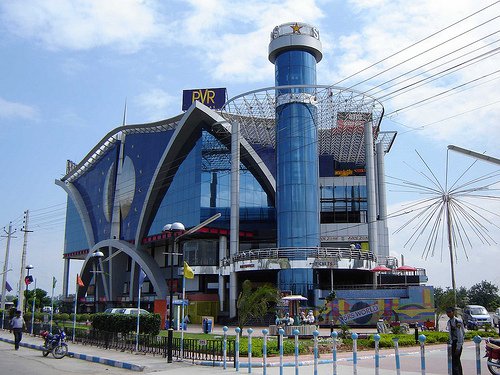Nashik, Maharashtra City Guide: Where To Go, Stay, Eat, And shop in India’s best city.
Nashik is a historic and culturally rich city in the Indian state of Maharashtra. Located in the northwest region of Maharashtra, it is one of the largest cities in the state and holds immense religious, historical, and economic significance. Nashik is known for its association with Hindu mythology, its thriving wine industry, and its rapid urbanization. Here are some key points about Nashik:
Geography and Climate:
- Location: Nashik is situated on the banks of the Godavari River, in the northern part of Maharashtra. It lies about 180 kilometers northeast of Mumbai.
- Climate: The city experiences a tropical wet and dry climate, with hot summers, moderate winters, and significant rainfall during the monsoon season.
Economy:
- Agriculture: Nashik is a major agricultural hub, known for its production of grapes, onions, and tomatoes. It is often referred to as the “Wine Capital of India” due to its thriving vineyards and wine production.
- Industrial Growth: The city has a growing industrial base, with industries such as manufacturing, engineering, and electronics. The Satpur and Ambad industrial areas are key economic zones.
- Wine Industry: Nashik is the center of India’s wine industry, with numerous wineries producing high-quality wines. The Sula Vineyards is one of the most famous wineries in the region.
- IT and Services: Nashik is emerging as an IT and services hub, with the development of IT parks and business centers.
Culture and Heritage:
- Languages: Marathi is the primary language spoken, but Hindi, English, and other regional languages are also widely understood.
- Festivals: Nashik is known for its vibrant festivals, including the Kumbh Mela, which is held every 12 years and attracts millions of pilgrims. Other festivals like Diwali, Ganesh Chaturthi, and Makar Sankranti are celebrated with great enthusiasm.
- Cuisine: The local cuisine is predominantly Maharashtrian, with dishes like puran poli, misal pav, and vada pav being popular. The city also offers a variety of street food.
Tourism:
- Religious Sites:
- Trimbakeshwar Temple: One of the 12 Jyotirlingas in India, it is a major pilgrimage site for Hindus.
- Kalaram Temple: A historic temple dedicated to Lord Rama, known for its black stone idol.
- Saptashrungi Temple: A hilltop temple dedicated to Goddess Saptashrungi, located about 60 kilometers from Nashik.
- Panchavati: A sacred area in Nashik associated with the Ramayana, where Lord Rama is believed to have stayed during his exile.
- Wine Tourism: Nashik’s vineyards and wineries, such as Sula Vineyards and York Winery, attract tourists for wine tours and tastings.
- Pandavleni Caves: Ancient Buddhist rock-cut caves dating back to the 1st century BC, located on the outskirts of the city.
Education and Research:
- Educational Institutions: Nashik is home to several prestigious educational institutions, including:
- Yashwantrao Chavan Maharashtra Open University (YCMOU)
- KTHM College
- Sandip University
- Research Centers: The city has research facilities in agriculture, particularly in viticulture and oenology (wine science).
Transportation:
- Air: The nearest airport is Gandhinagar Airport (Ozar), located about 20 kilometers from the city, which connects Nashik to major domestic destinations.
- Rail: Nashik Road Railway Station and Deolali Railway Station are the main rail hubs, providing connectivity to Mumbai, Pune, and other parts of India.
- Road: Nashik is well-connected by national highways (NH-160 and NH-848) and state highways, making it accessible from Mumbai, Pune, and other cities.
- Public Transport: The city has a network of buses operated by the Nashik Mahanagar Parivahan Mahamandal Limited (NMPML).
Governance:
- Administration: Nashik is governed by the Nashik Municipal Corporation (NMC), which oversees civic infrastructure and services.
- Smart City Initiative: Nashik is part of the Indian government’s Smart Cities Mission, aimed at improving urban infrastructure, transportation, and quality of life.
Historical Significance:
- Ramayana Connection: Nashik is deeply associated with the Hindu epic Ramayana. It is believed to be the place where Lord Rama, along with his wife Sita and brother Lakshmana, spent part of their exile.
- Ancient History: Nashik has a rich historical legacy, with evidence of human settlement dating back to the Stone Age. It was an important center during the Satavahana and Mughal periods.
Wine and Agriculture:
- Wine Capital: Nashik is the leading wine-producing region in India, contributing to over 70% of the country’s wine production. The annual Nashik Wine Festival celebrates the city’s wine culture.
- Onion Trade: Nashik is a major hub for onion production and trade, often referred to as the “Onion Capital of India.”
Nashik is a city that beautifully blends its ancient heritage with modern development. Its religious significance, thriving wine industry, and scenic beauty make it a unique and important city in Maharashtra. Whether as a pilgrimage destination, a wine tourism hotspot, or an emerging industrial hub, Nashik continues to grow and attract visitors and investors alike.

![Nashik, Maharashtra City Guide: Where To Go, Stay, Eat, And shop in India’s best city. [Updated-2025]](https://traveloinfo.com/wp-content/uploads/2025/02/nashik1-872x547.jpg)
![Aurangabad, Bihar City Guide: Where To Go, Stay, Eat, And shop in India’s best city. [Updated-2025]](https://traveloinfo.com/wp-content/uploads/2025/03/AurangabadBihar1.jpg)
![Jehanabad, Bihar City Guide: Where To Go, Stay, Eat, And shop in India’s best city. [Updated-2025]](https://traveloinfo.com/wp-content/uploads/2025/03/JehanabadBihar.jpg)
![Buxar, Bihar City Guide: Where To Go, Stay, Eat, And shop in India’s best city. [Updated-2025]](https://traveloinfo.com/wp-content/uploads/2025/03/BuxarBihar.jpg)



![Bangalore, Karnataka City Guide: Where To Go, Stay, Eat, And shop in India’s best city. [Updated-2025]](https://traveloinfo.com/wp-content/uploads/2025/02/bangaloref.jpg)
![Hyderabad, Telangana City Guide: Where To Go, Stay, Eat, And shop in India’s best city. [Updated-2025]](https://traveloinfo.com/wp-content/uploads/2025/02/hydrabad1.jpg)
![Ahmedabad, Gujarat City Guide: Where To Go, Stay, Eat, And shop in India’s best city. [Updated-2025]](https://traveloinfo.com/wp-content/uploads/2025/02/ahemadabad1.jpg)